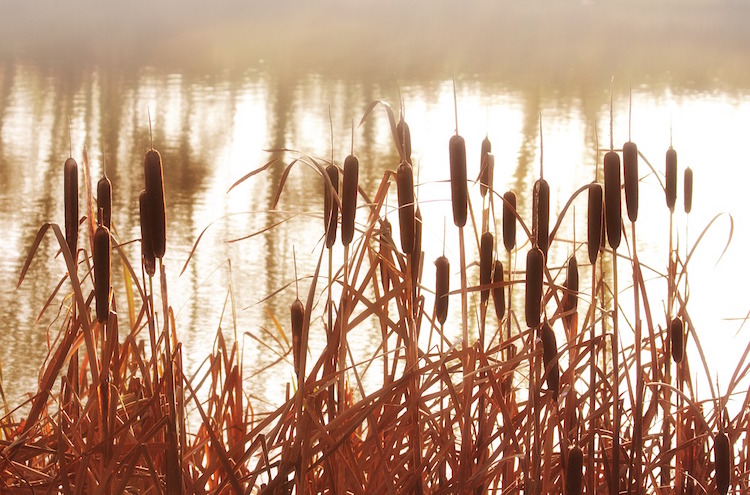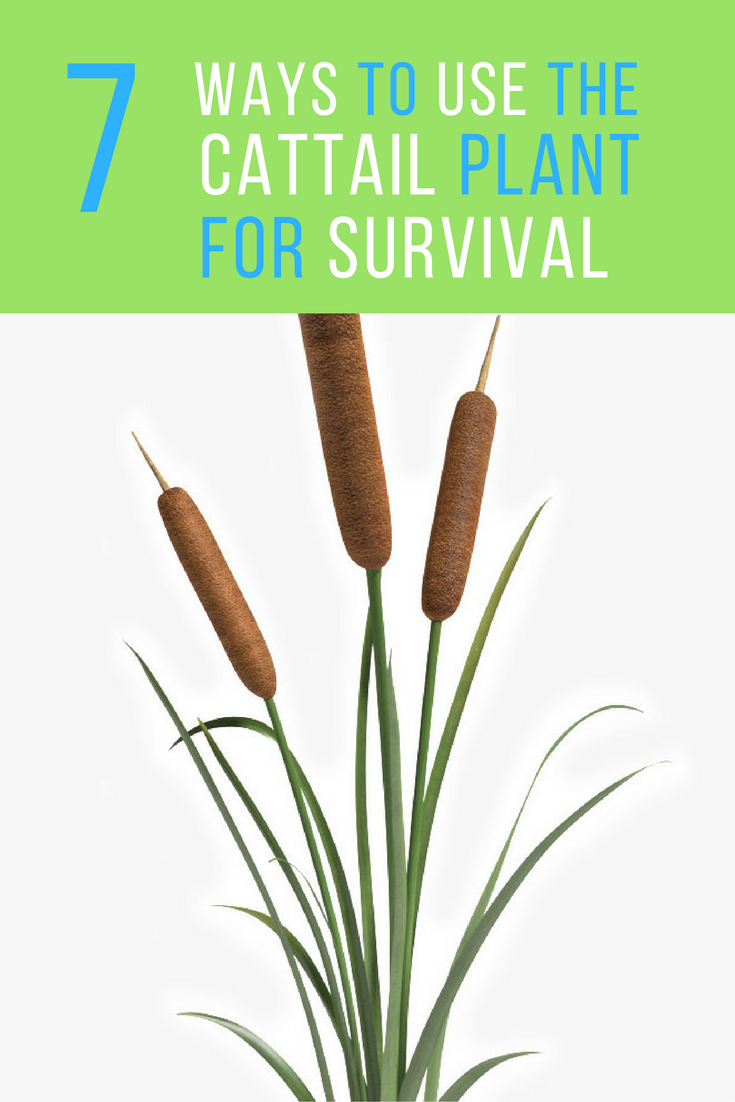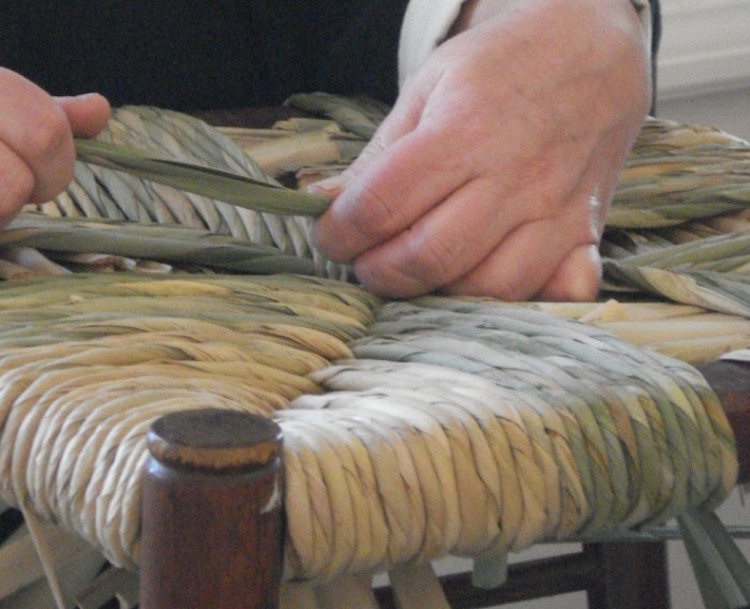 From the look of them, no one would guess that cattails are so useful. However, they’re incredibly useful, especially in survival situations.
From the look of them, no one would guess that cattails are so useful. However, they’re incredibly useful, especially in survival situations.
Cattails grow along rivers, lakes, streams, and ponds, and can be used for food, for shelter, for medicine, for starting a fire, for cordage, for insulating clothing, and for making baskets.
Let me tell you how.
However, if you don’t have time to read about it, then you can learn about it here:
Survival Tips – Using Cattails To Survive.

Nom, Nom, Nom: Cattails Tastes Good
According to eattheweeds.com, every part of the cattail is edible during all seasons of the year. In the late fall and early winter, the roots can be harvested to make flour. First, the outer layer of the root is peeled off.
Then the root is chopped and mashed like potatoes. Next, the pieces are soaked in water in a container to release the starch. During the soaking stage, the starch should settle at the bottom of your container and begin to look like wet flour.
Finally, the water is drained and the ‘flour’ left to dry out. You can add some cattail pollen to this starch to make bread or add some more water to make some soup. In the spring, the corms or young shoots of the plant can be cooked or eaten raw.
However, if you allow the corms to mature a bit, then they can be peeled, cooked, and eaten like any old stalk of asparagus. In early summer, the stems above the soil line and the roots can be pulled and peeled to be boiled or eaten raw.
At this time, the flower heads can also be removed and roasted or boiled like corn. In the mid to late summer, cattails grow yellow pollen on their heads that can be shaken off and used like flour to make soups, pancakes, bread, or even thicken a good sauce or gravy.
Cattails Can Shelter You from the Pouring Rain
Believe it or not, the green leaves of a cattail can be used to make a shelter. All you have to do is cut them and weave them together into shingle squares like you’d find on any roof.
Roofs made of these leaves are so strong that they can protect you from rain, wind, or snow without losing any of their strength. You can find more information about this at Survival School.
Cattail leaves also make good sleeping mats. You can weave the leaves together just like you did for the roof to make a mat. However, if you make two mats and add some stuffing made out of pine boughs and the fluff from the cattail’s head, then you’ll be able to make something that is similar to a mattress.
You just make two long mats then connect them on one side. Next, fill one side with your stuffing, fold the empty side of the mat over, then tie it off. After you are done using it, you should be able to fold it like a sleeping bag.
Cattails Can Heal You
This plant is so versatile that it has medicinal uses. You can cut open its root, bruise the area of the plant that is exposed with a knife, and make a poultice for any type of wound. You can learn more about making a poultice here.
This poultice can be used for insect bites (spiders!), stings, scrapes, burns, and more. Burns can also be treated with the fluff from the flowers, which are good for preventing diaper rash as well. Plus, the young flowers can treat diarrhea.
Besides bruising them to make a poultice, cattails can also be burned to treat abrasions and wounds. According to the the 7Ps blog, ash from burnt cattails has antiseptic properties. Antiseptic properties can also be found in the amber-colored liquid that drips from the stem of the plant, which can be used to relieve toothaches.
Cattail is on Fire
After the head of a cattail turns brown, the fluff inside of it can be used as tinder for a fire. You can use it right along with the dried leaves and stalks from old plant growth to start your fire.
Not only that, the plant itself can be made into a torch. All you have to do is cut off the stalk with the head still attached, cover it in pine resin and light it up. There’s a demonstration and details on how to start a fire using cattails at Sword of Survival.
Cordage Anyone?
According to Tom Brown Jr. at wildwood survival, cordage is a rope that is indispensable in survival situations. To make cordage from cattail leaves, all you have to do is peel strips from them, let them dry, then braid three of the strips together.
To create a strong rope, you’ll have to wrap and splice the cordage as well. These ropes can be used as fishing lines, bowstrings, lashings, trap triggers, snares, and more.
It Can be Used in Clothing Too
You can make a fashion statement by using the dried leaves of the cattail plant to weave a hat. Plus, you can use the fluff from the head of the plant to insulate jackets, coats, shoes, pants, and other clothing.
The fluff can also be used to insulate bedding or make pillows if you like.
Basket Weaving 101

Basket weaving can come in handy in a survival situation. Baskets can be made for carrying food and other items. To make a basket you’ll first need to weave the leaves together to make a base, then fold the sides of the base up, then weave around the sides.
Once the sides are finished, straps for carrying the basket can be weaved into them. Better still, the basket will only get stronger as the woven leaves dry.
Let’s All Eat Some Cattail!
We never know when we might be in a survival situation, so we need to know about plants like cattails. They are more versatile than they look, and may even be defined as one of the survivalists’ greatest secrets.
The cattail can be used for food, for medicine, to make shelter, to make fires, for cordage, to weave baskets, and even more. You may not use the cattail for all of those things, but it’s good information to have in case you need it for some of those things.